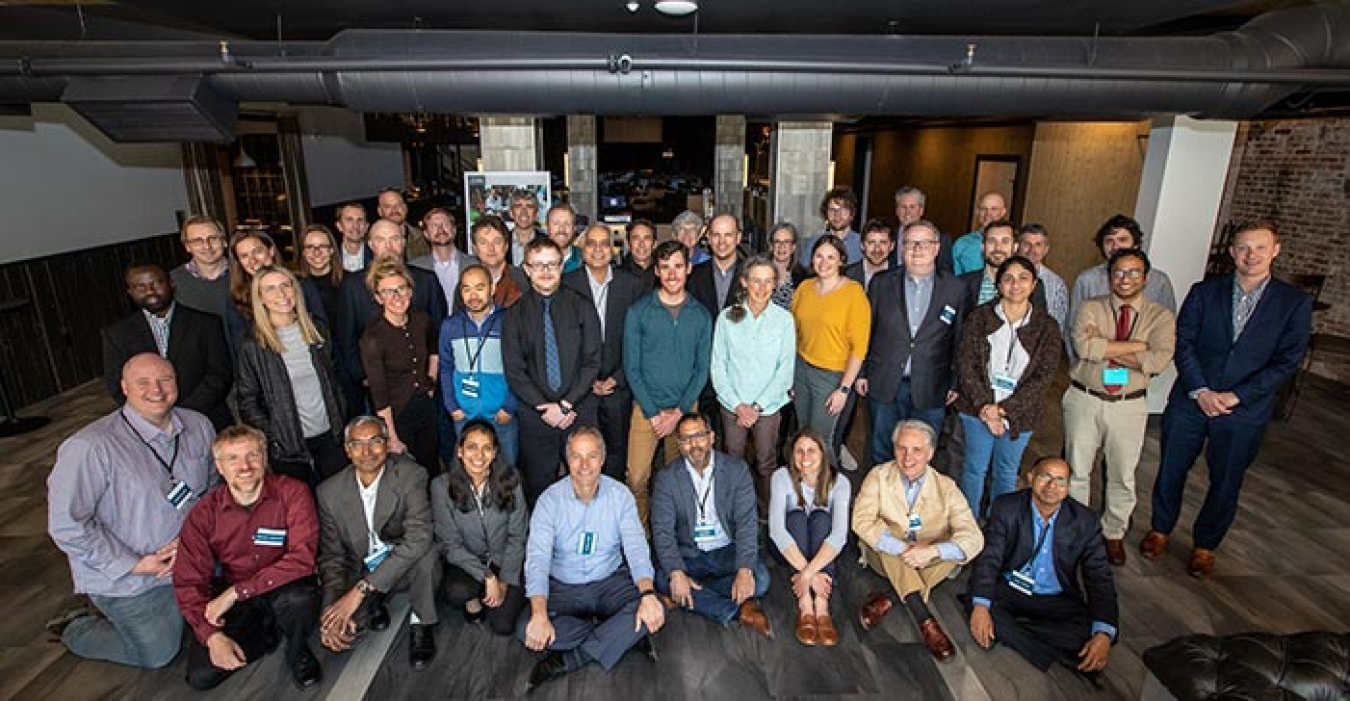
Members of Energy I-Corps Cohort 9
The opening session for Energy I-Corps Cohort 9 was held March 11–15, 2019, and the closing session was held April 30–May 2, 2019. Both sessions took place in Golden, Colorado.
Cohort 9 was composed of 12 teams from Argonne National Laboratory (ANL), Idaho National Laboratory (INL), Lawrence Berkeley National Laboratory (LBNL), National Renewable Energy Laboratory (NREL), and Pacific Northwest National Laboratory (PNNL).
Teams and Technologies
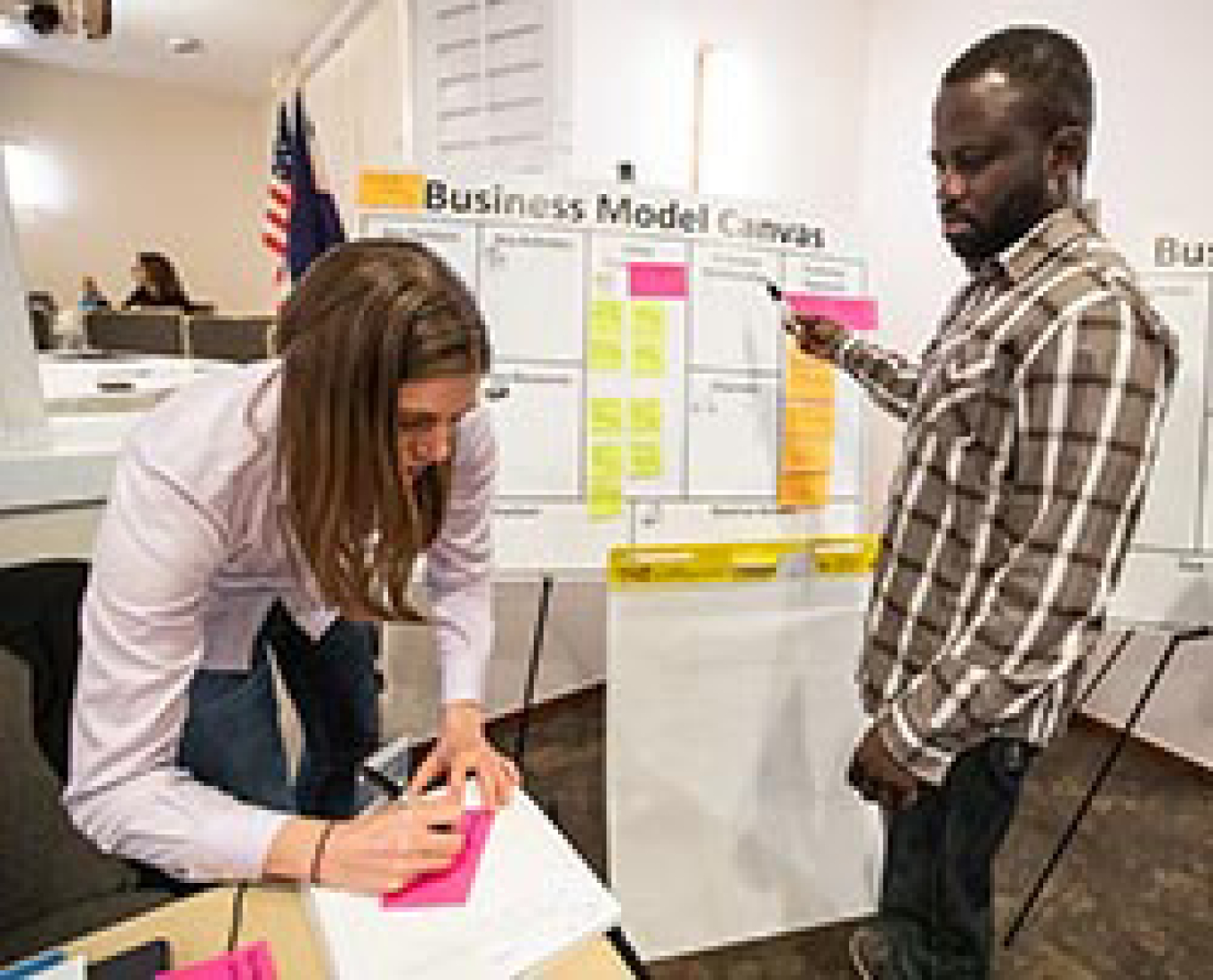
Team Members
- Principal Investigator: Kirstin Alberi
- Entrepreneurial Lead: Paul Ndione
- Industry Mentor: Anthony Catalano
Technology Description
Our technology improves the efficiency of red and amber light emitting diodes (LEDs) while utilizing existing manufacturing and device design practices. The higher efficiency and narrow emission band is expected to enable spectral tuning of illumination sources for a variety of applications.
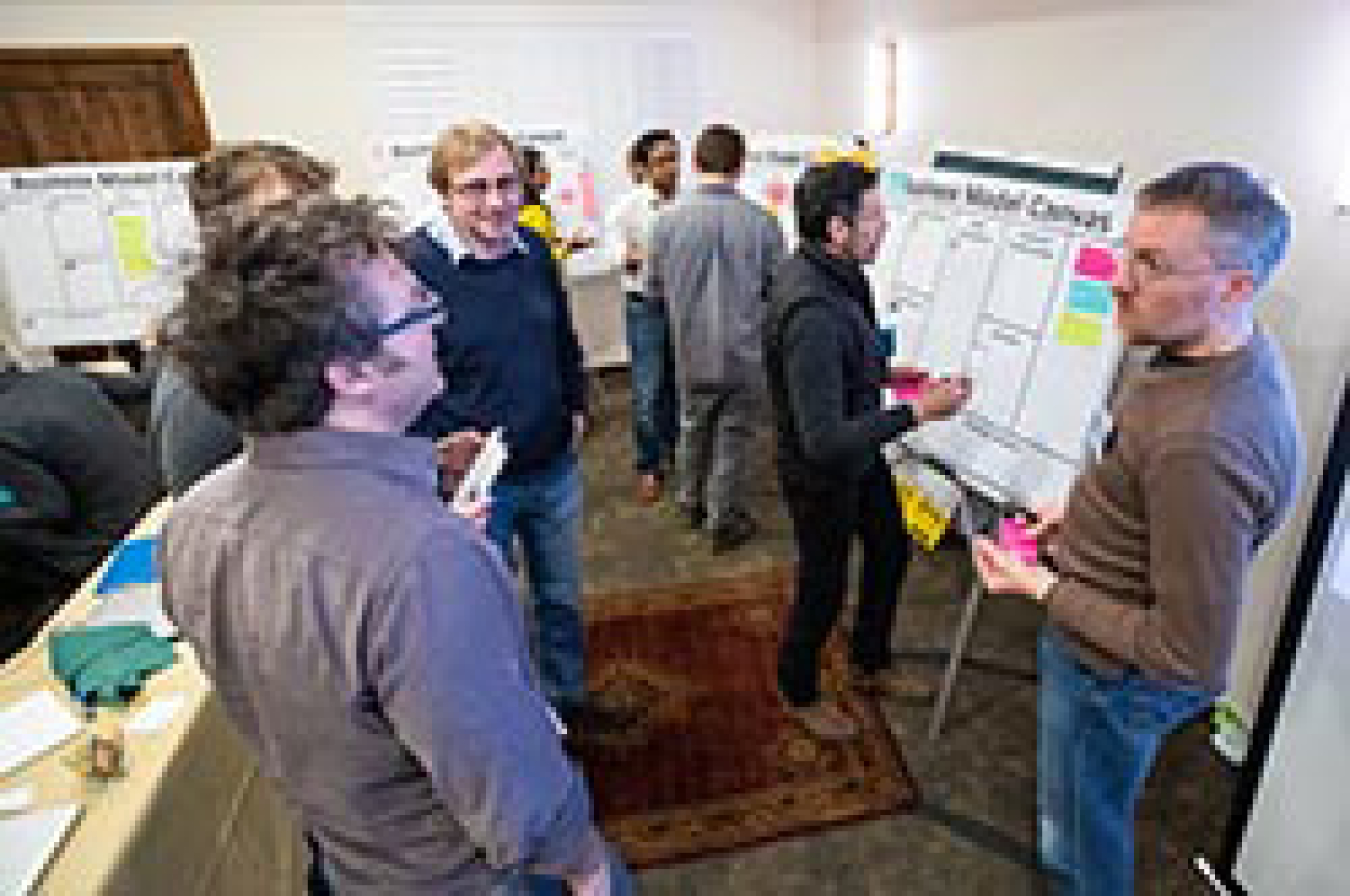
Team Members
- Principal Investigator: Spencer Dutton
- Entrepreneurial Leads: Michael Woodcox, David Vernon
- Industry Mentors: Jamie Hillis, Bill Edrich
Technology Description
Our technology provides a drop-in replacement that is more efficient and can shift a significant proportion of the building's heating and cooling energy use to respond to grid-pricing signals. Our concept uses phase-change-material-based thermal energy storage to store either thermal energy (heat or cold) when grid electricity costs are lower during periods of reduced demand.
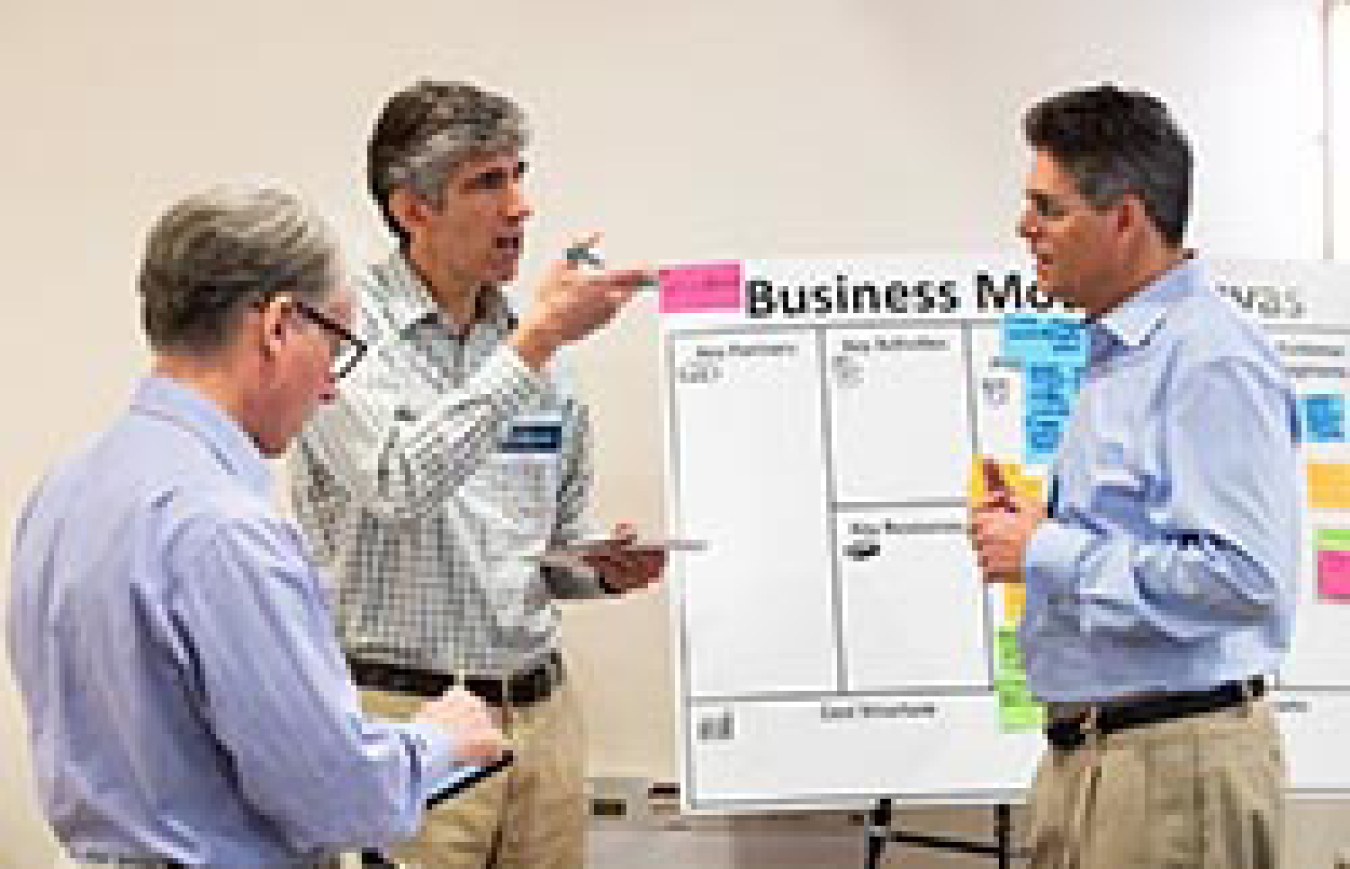
Team Members
- Principal Investigator: Richard Brown
- Entrepreneurial Lead: Tony Nahas
- Industry Mentor: Greg Wolfson
Technology Description
The EcoBlock Initiative is a new concept to significantly reduce the energy footprint of residential neighborhoods by retrofitting them at scale with energy efficiency and renewable energy technologies. The EcoBlock concept integrates several key energy technologies in an innovative way: combining deep energy efficiency retrofits at the block-scale with an integrated electrical system that includes rooftop solar photovoltaics, a dedicated power distribution system linking all residential buildings while remaining connected to the utility grid, block-scale energy storage, electric vehicle (EV) charging stations, smart microgrid control and management software that optimizes supply and demand at the block-scale while encouraging human behavioral demand-response, as well as water efficiency and reuse opportunities.
EcoBlock uses LBNL-developed software for the design and operation of the microgrid and the home energy systems. Deploying these clean-energy resources at the block level provides several benefits: improved utilization of assets through shared solar, storage and EV charging systems; financial economies of scale through larger development projects, modular, scalable designs, and access to capital markets; and improved load profiles, demand response, and power reliability through coordinated control of the microgrid’s assets.
We envision that EcoBlocks will be deployed at scale through public-private partnerships centered around a private-sector development entity that organizes the property owners along with the required financing, permitting, design, construction, and operation of the EcoBlock. Because this development entity does not exist today, we hope to explore through Energy I-Corps whether a viable value proposition exists for this private entity, how it would interact with key customers and partners, and (ultimately) what policies and public incentives are needed to make this a viable model.
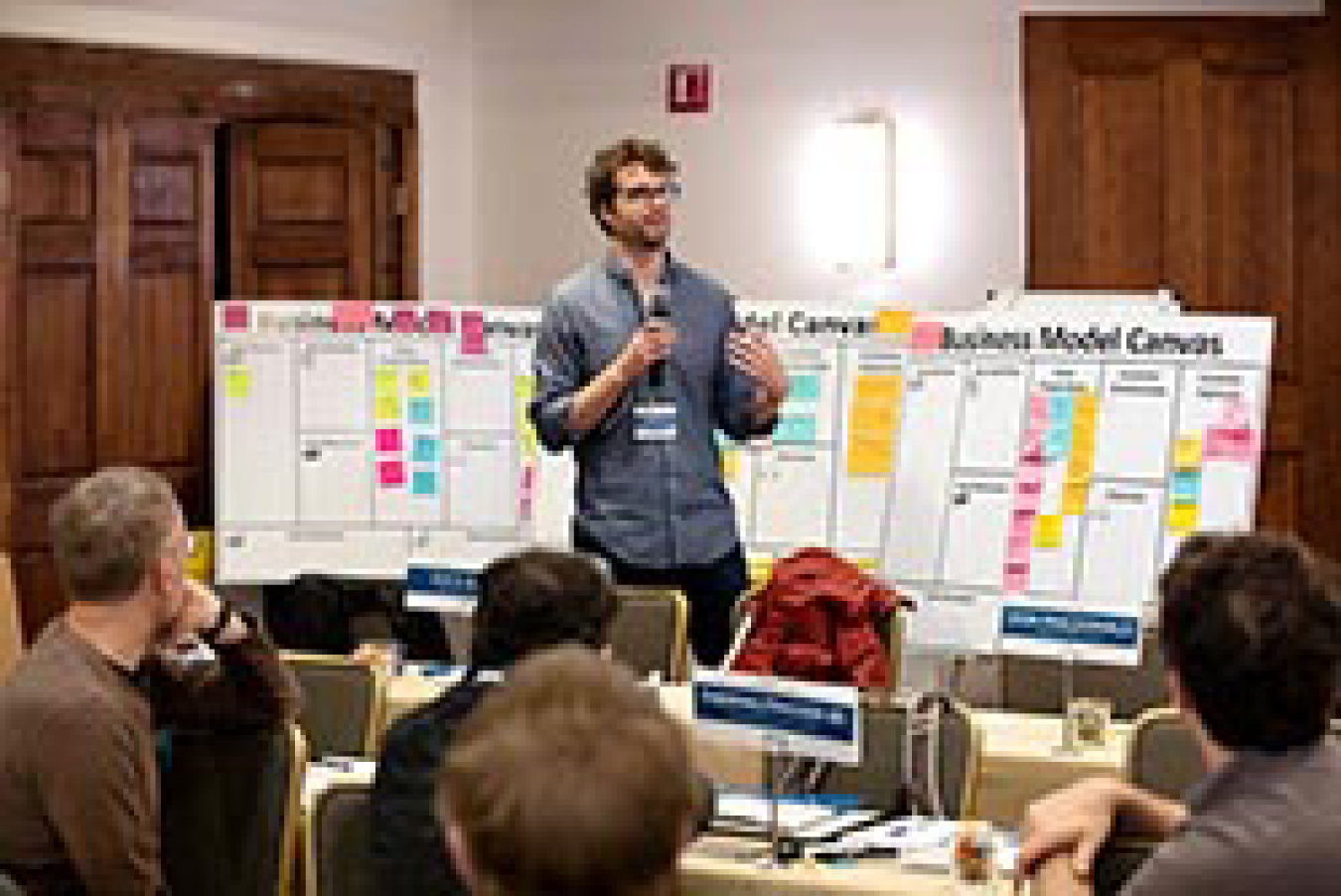
Team Members
- Lead Principal Investigator: Miguel Luis Delgado Heleno
- Principal Investigators: Purabi Thakre, Shreya Agarwal
- Entrepreneurial Lead: Nicholas Xavier DeForest
- Industry Mentor: Dave Klapp
Technology Description
Distributed Energy Resources Customer Adoption Model (DER-CAM) is an optimization-based, decision-support tool used to guide design decisions related to the selection, sizing, placement, and operations of distribute energy resources for behind-the-meter and multi-energy microgrid applications. DER-CAM is a flexible platform to guide the design process and maximize the value of microgrids and advanced energy systems—from first-cut exploration to detailed system modeling and feasibility.
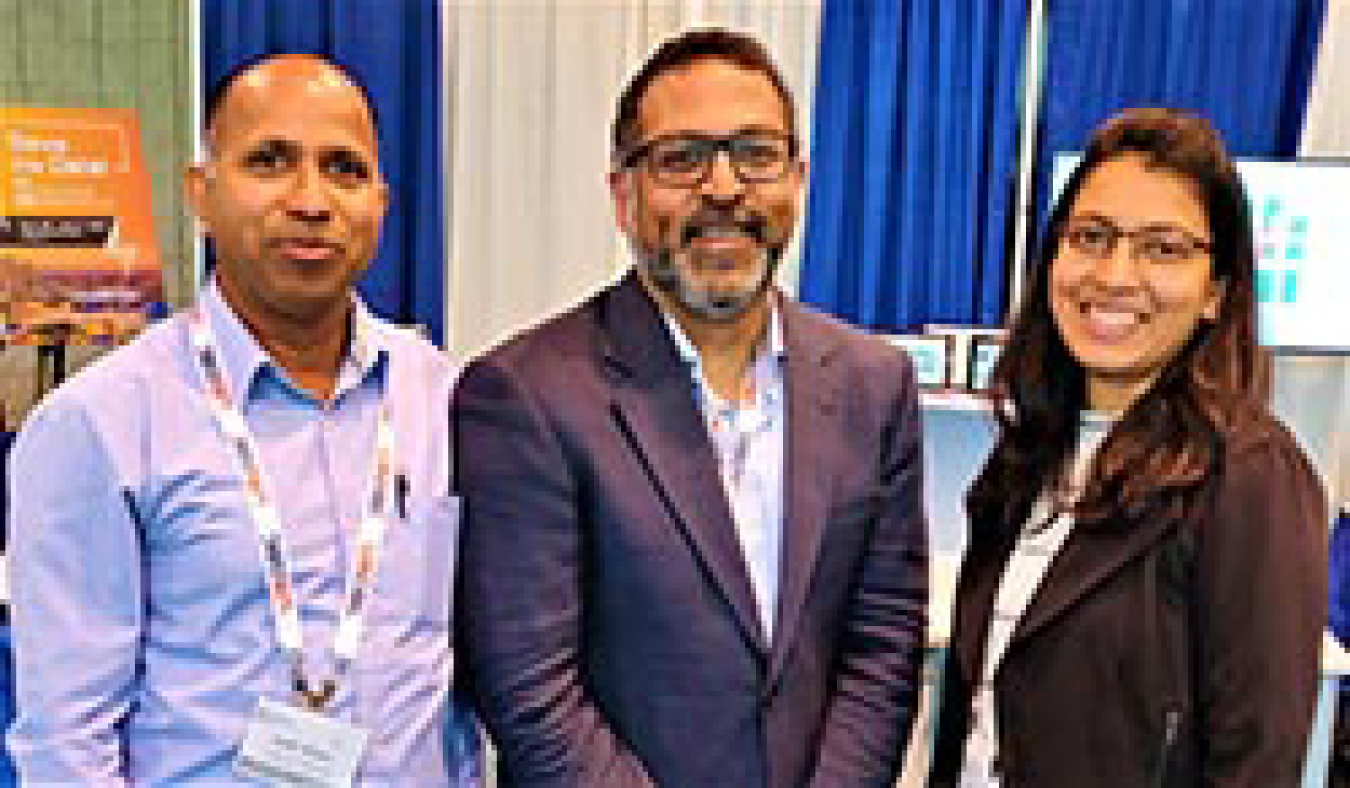
Team Members
- Principal Investigator: Anil Mane
- Entrepreneurial Lead: Devika Choudhury
- Industry Mentor: Rueben Sarkar
Technology Description
The energy storage market is projected to exceed $50 billion annually in the next five years. A major portion of this market is rechargeable batteries used in consumer electronics, electric vehicles (automobiles, drones, and aviation), and stationary storage for smart grids. These applications demand increases in performance (e.g., storage capacity and charge/discharge rate) as well as longer-cycle lifetime and greater safety. Advanced cathodes for lithium ion batteries, such as lithium- and manganese-rich, layered-layered-spinels and next-generation, nickel-rich chemistries, can deliver high energies and capacities that will meet the needs of these emerging applications. However, for such advanced materials to operate successfully in practical cells, the cathode/electrolyte interfaces must be stabilized to prevent deleterious electrochemical reactions that can lead to capacity fade and cell failure. Recently, we have demonstrated that the application of materials made by atomic layer deposition to cathode and/or anode materials can provide a two to three times performance enhancement and reduce some of the instability problems mentioned above.
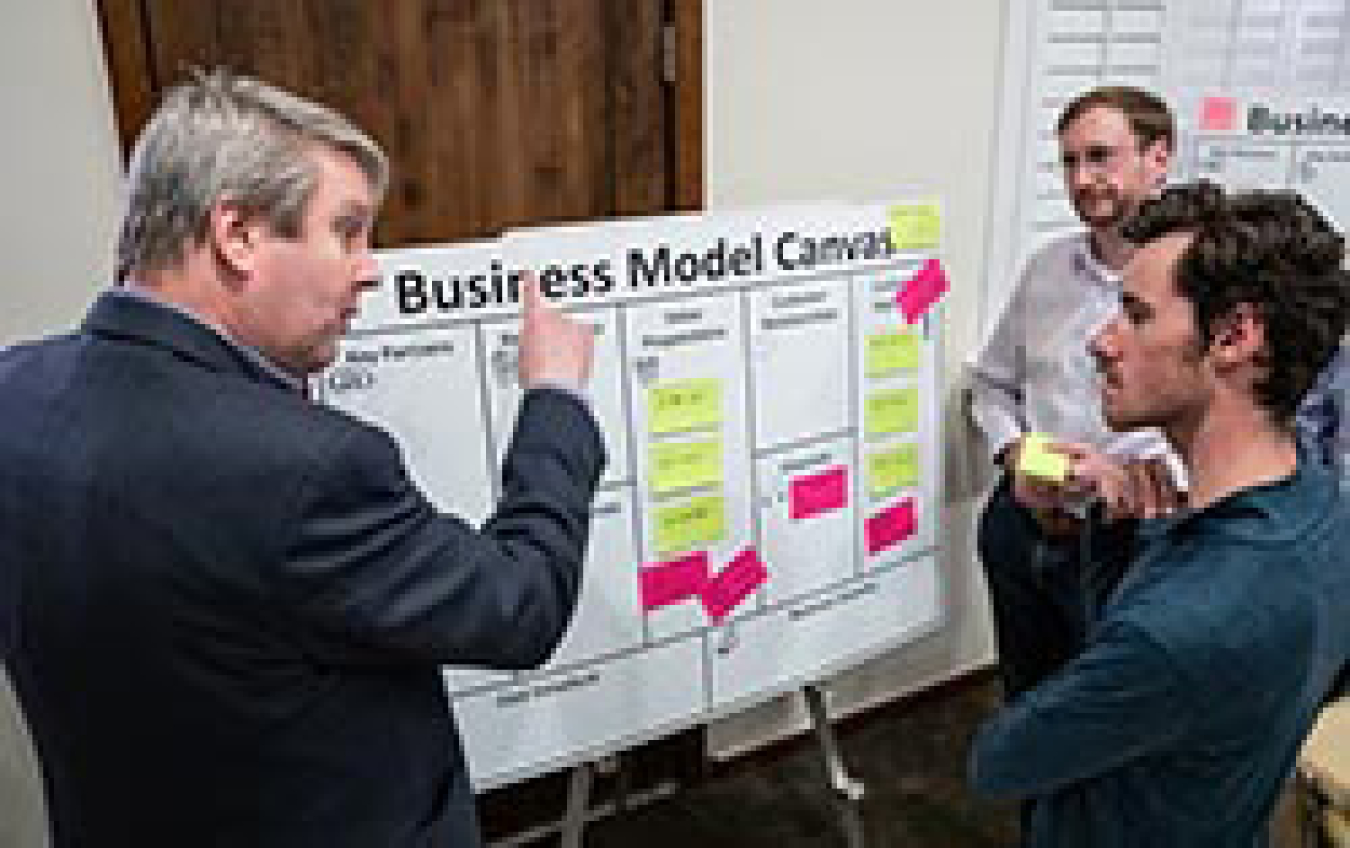
Team Members
- Principal Investigator: Joseph Rollin
- Entrepreneurial Lead: Patrick Saboe
- Industry Mentor: John Aikens
Technology Description
Durable bio-based polymers have the potential to unlock new materials properties and sequester more than 1 Gt CO2 per year. But microbial approaches for producing the required precursors are limited by the difficulty of strain engineering and the limited product concentrations that can be achieved, causing a challenging bioplastics value proposition. Cell-free biomanufacturing combines the ability of biology to convert renewable feedstocks to bioplastic precursors with chemical engineering process optimization enabled by the use of a well-defined system, while reducing the product separation costs of existing processes. As a result, bio-based polymer precursors can be produced at price competitive with petrochemical polymers.
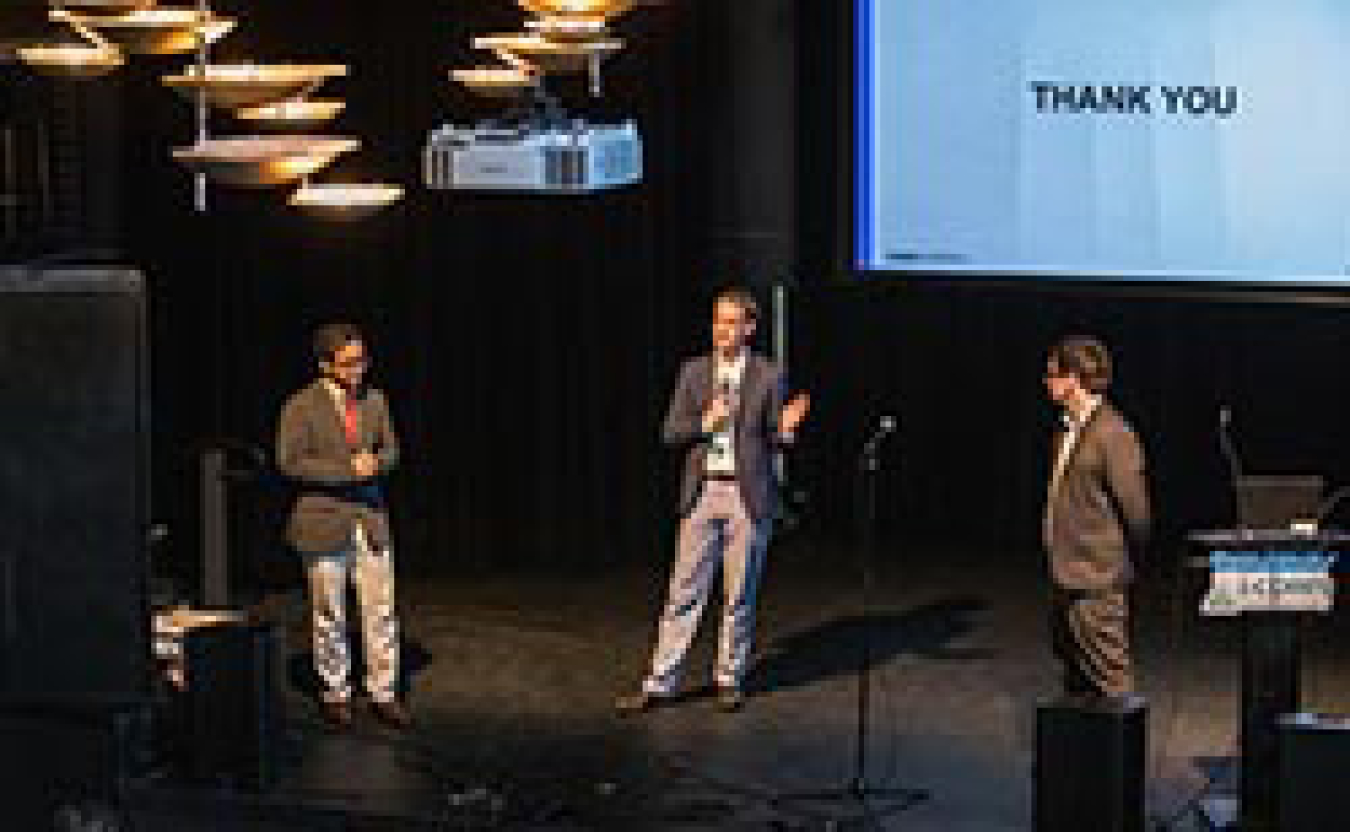
Team Members
- Principal Investigator: Phil Laible
- Entrepreneurial Lead: Ed Barry
- Entrepreneurial Lead: Moinuddin Ahmed
Technology Description
Xerogels are highly porous solids that can be synthesized with diverse compositions (inorganics, organics, and hybrids thereof) and unique mechanochemical properties. Consequently, these materials find wide applicability as adsorbents, catalyst scaffolds, separation filters, and thermal insulators. We have designed, prepared, and demonstrated a process for separation and recovery from mixtures via specific adsorption using high surface-area, flexible, nanostructured gel adsorbents. Xerogels have excellent capabilities in biofuel recovery from biofermentor systems, adsorbing up to eight times their mass and with selectivity approaching 100% for hydrocarbons without negatively impacting cell viability and bioproduct output. We can generate a universal separation platform based on this material framework and tune the composition to enable specific adsorption and recovery of a desired target molecule.
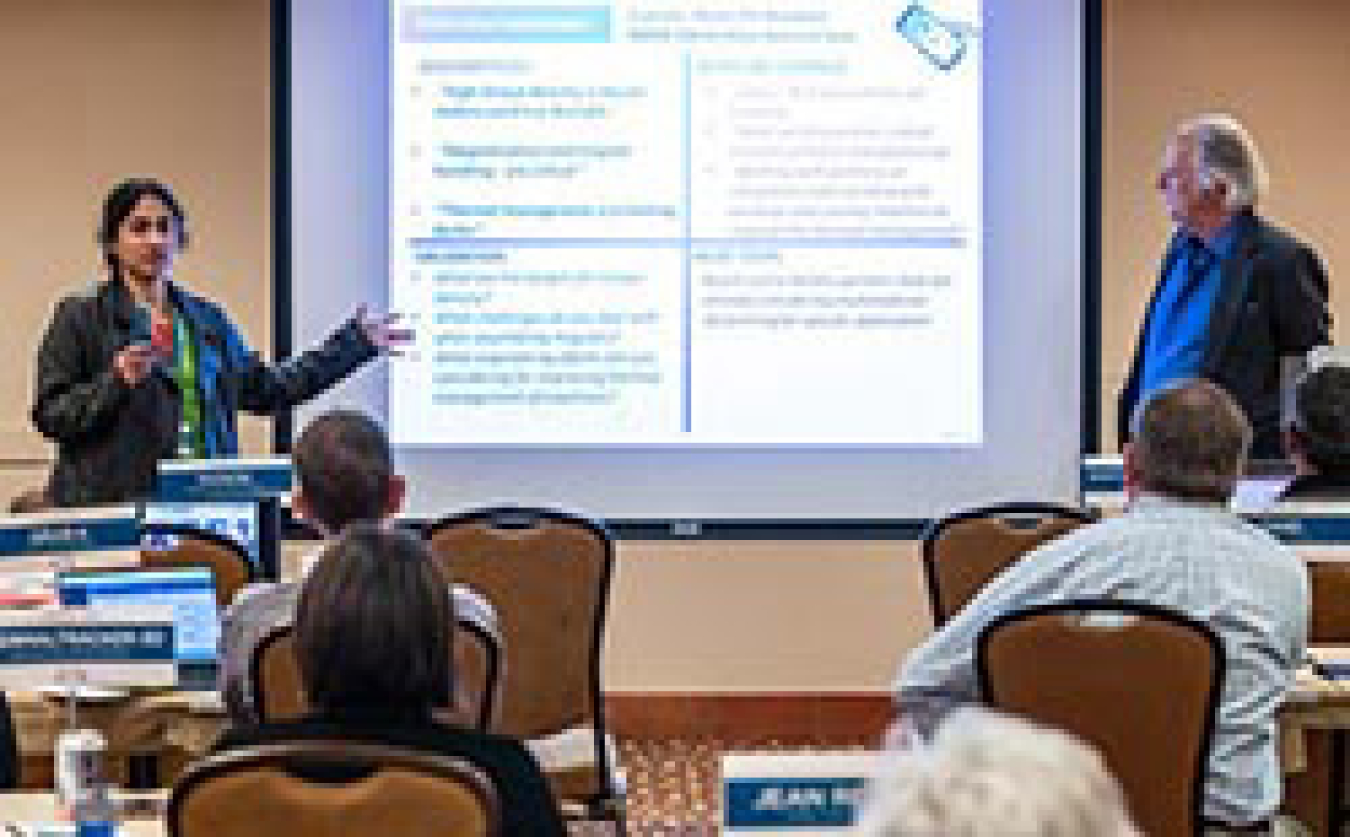
Team Members
- Principal Investigator: Latha Sethuraman
- Entrepreneurial Leads: Jonathan Keller, Robert Preus
- Industry Mentor: William Erdman
Technology Description
MAD℮3D is our transformative technology for designing and manufacturing the next generation of high-efficiency, high-power-density electric machines that are needed to support advancements in the renewable and transportation industries. MAD℮3D leverages advanced topology optimization engines along with NREL’s additive manufacturing techno-economic and levelized cost of energy tool sets to produce 3D-printable electric machines at costs, masses, and efficiencies that allow for rapid adoption and commercialization. This technology unlocks an entirely new paradigm that can have far-reaching system level impacts and low risk pathway for enabling high-performance materials and manufacturing and de-risking next generation powertrain technology.
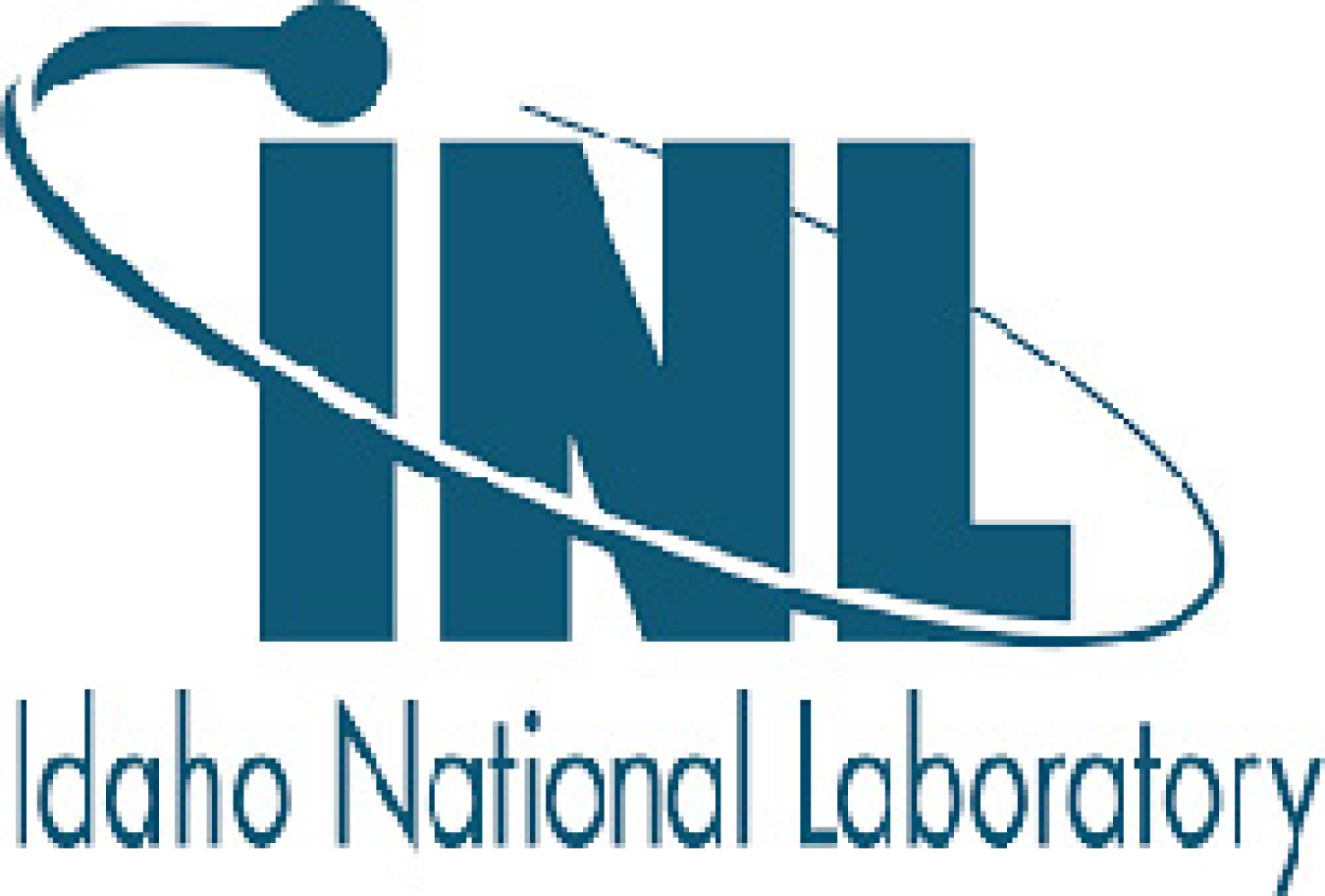
Team Members
- Principal Investigator: Jacob Lehmer
- Entrepreneurial Lead: Jake Gentle
- Industry Mentor: Paul Berg
Technology Description
Collaboration is a necessity in the modern research landscape because it allows interdisciplinary experts to come together to solve real-world problems. When researchers work together, data is shared, which often results in multiple storage locations with different file structures and with time, becomes highly unorganized. Every moment spent finding an existing piece of information is fundamentally wasted time. In the worst case, experiments need to be repeated, potentially costing millions in capital and opportunity cost. Systematic Analyzer of Numeric Data (SAND) is a software application developed to handle unordered data. SAND solves this problem by automatically finding, sorting, and organizing that shared data. Other included features increase the immediate utility of SAND without the need for additional applications, such as graphing and file format conversion.
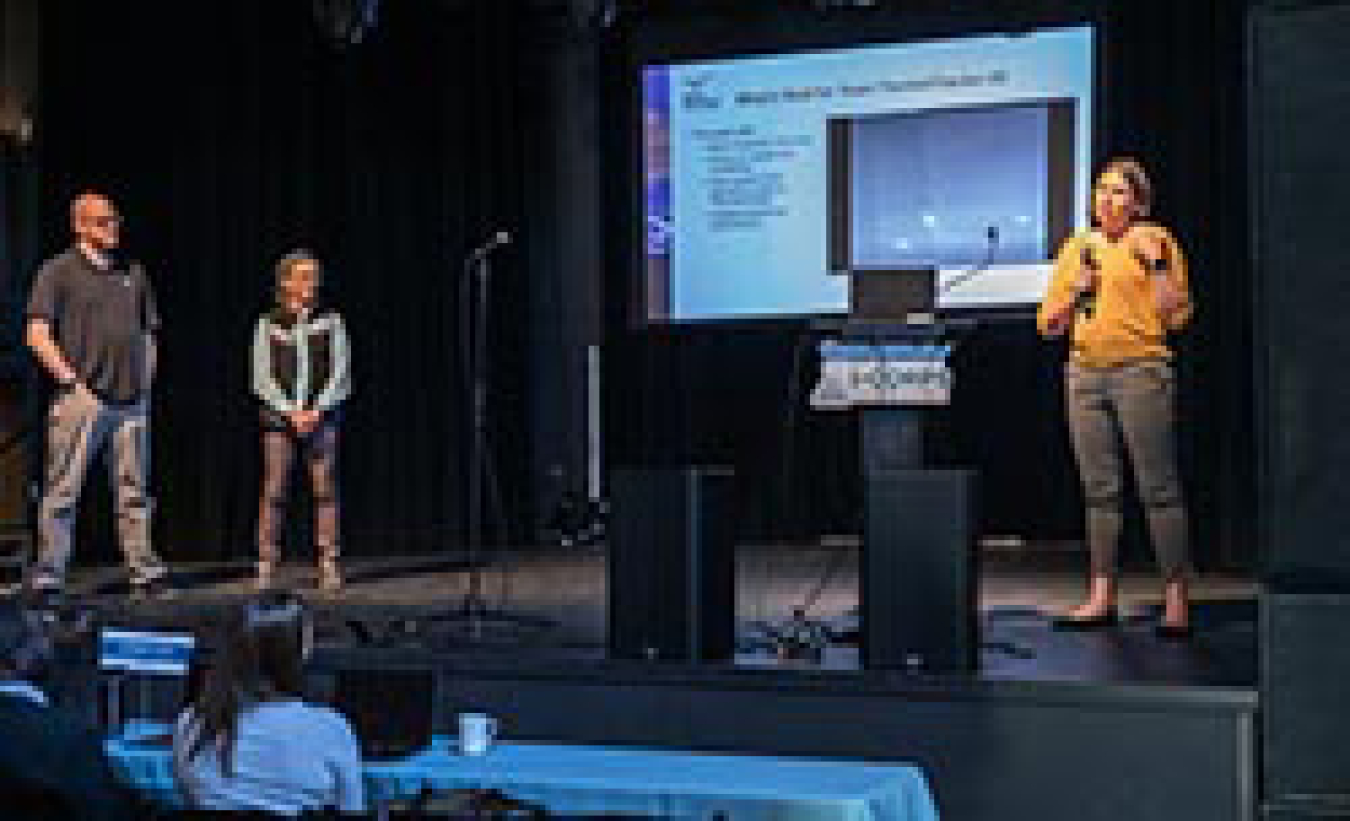
Team Members
- Principal Investigator: Shari Matzner
- Entrepreneurial Lead: Alison Colotelo
- Industry Mentor: Mark Jones
Technology Description
Offshore wind energy developers are required to monitor bird and bat activity at offshore wind energy sites. There is currently no reliable technical solution that can provide continuous observations in all-weather conditions and detailed flight patterns by species in cost-effective and timely way. The ThermalTracker-3D system extracts flight trajectories and identifies species in near real-time—both night and day and in low visibility conditions. This information is then available for immediate use for validating risk models, environmental impact assessments, and for adaptive management by regulatory agencies—helping wind energy projects stay on schedule and within budget.
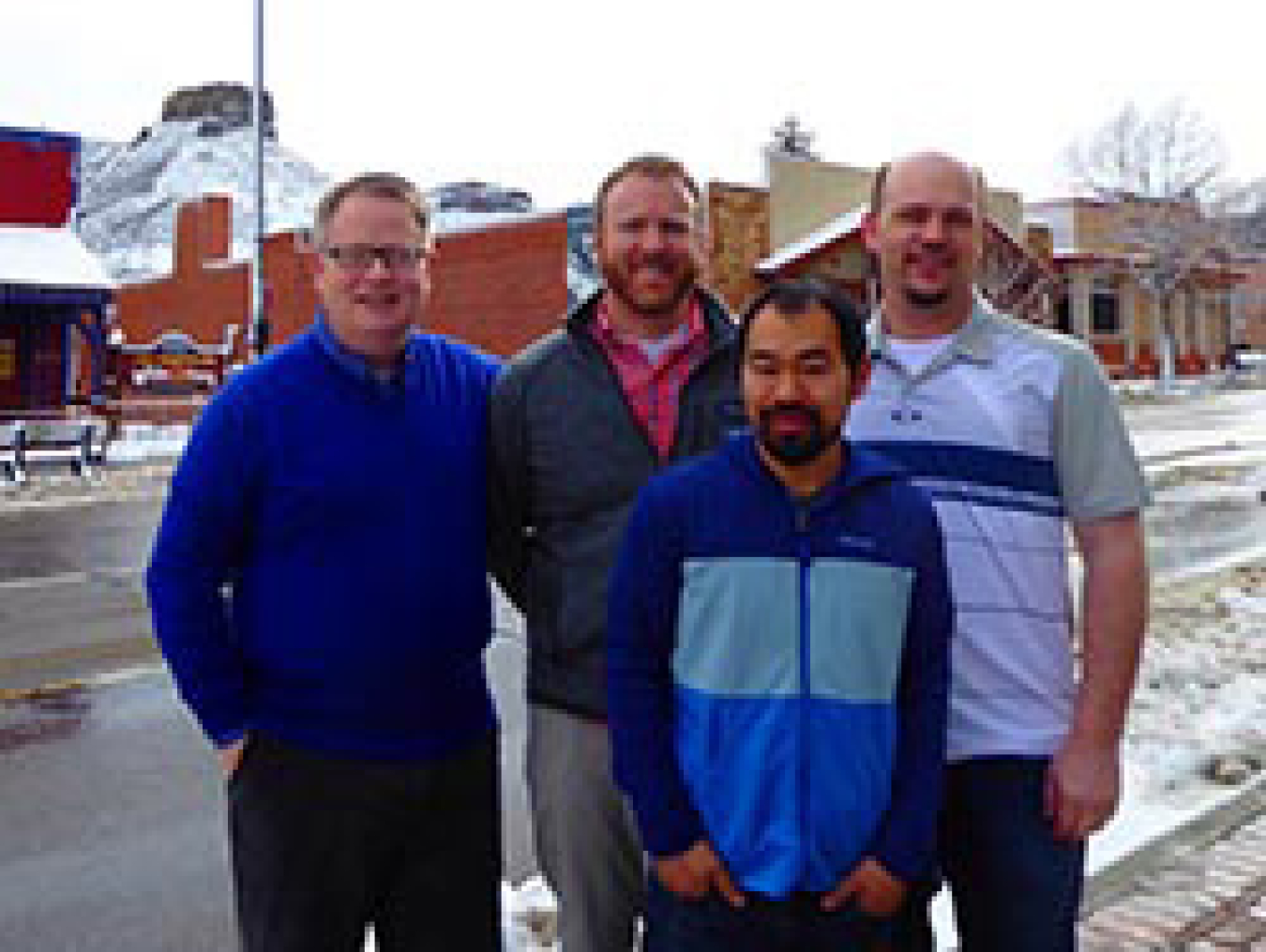
Team Members
- Principal Investigator: Ronald Boring
- Entrepreneurial Leads: Thomas Ulrich, Roger Lew
- Industry Mentor: Eric Harvey
Technology Description
High-fidelity training simulators are required at every nuclear power plant. These simulators are costly to develop and complex to operate. Additionally, the utility of these simulators is typically limited to training applications. Team Rotoro developed a simplified nuclear power plant simulator called the Rancor Mircroworld. Rancor is an important complement to full simulators. Because Rancor is streamlined, it allows rapid demonstration of control room concepts for new reactors. Additionally, Rancor is easy to customize, making it agile for development iterations, including the ability to use non-expert crews to validate design concepts. Rancor also facilitates classroom training, by providing a stepping stone that may be mastered more readily than a full simulator. Finally, due to its portability and flexibility, Rancor provides a research platform that may be used where it's not feasible to build a full-scope simulator, such as at a university laboratory. While the current version of Rancor focuses on nuclear power, it is being extended to other industries. Gamified, simplified simulation is particularly promising for industries where there may be limited simulator availability.
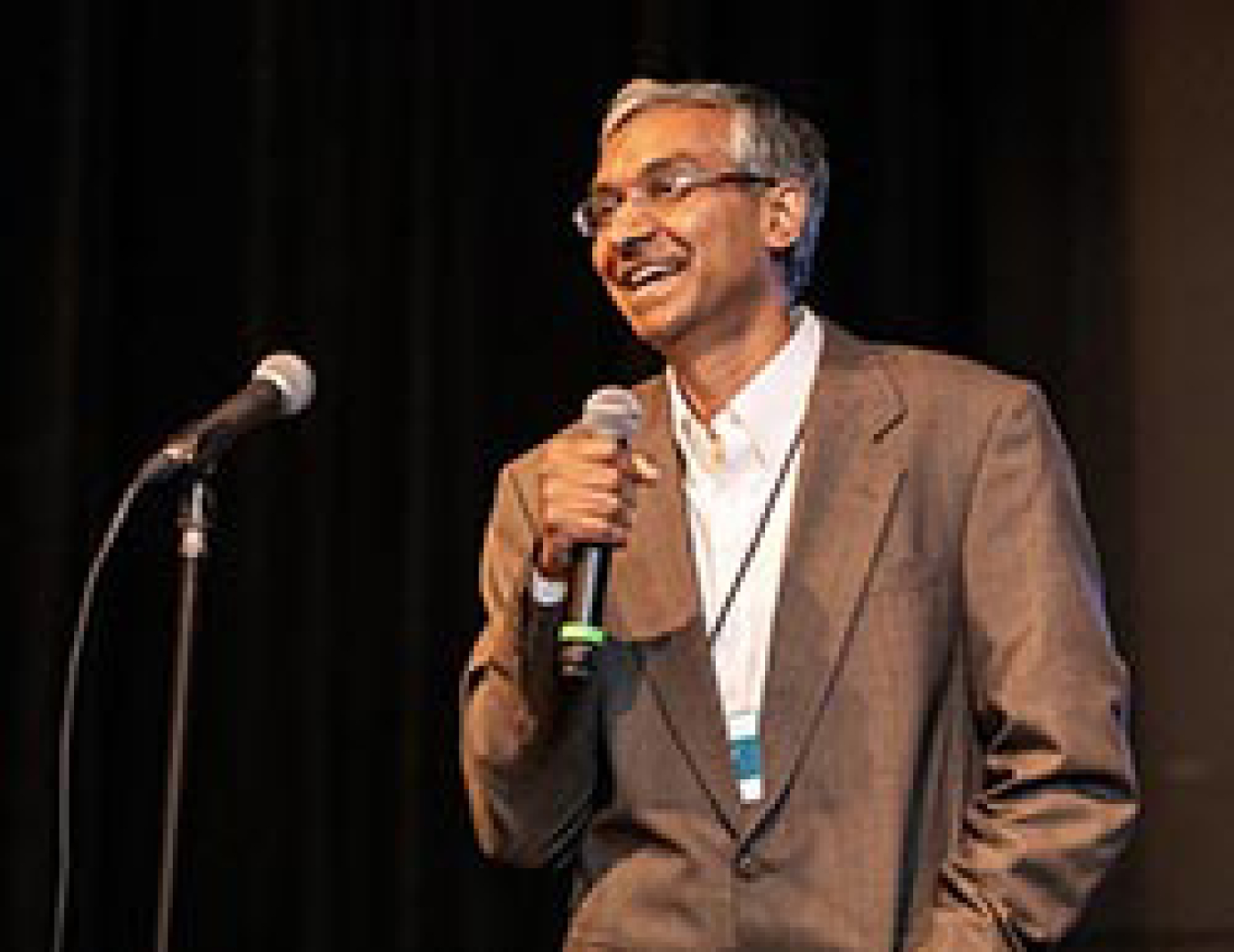
Team Members
- Principal Investigator: Sreenath Gupta
- Entrepreneurial Lead: Bipin Bihari
- Industry Mentor: Krishna Shenai
Technology Description
Spread over the last 15 years, the Shakti team has developed a suite of technologies that enables laser ignition in practical combustion engines. Covered by three patents, these technologies enable integration of recently developed microlasers into laser igniters that have small footprint, low-power draw, affordable cost, and resistance to harsh environments. Benefits include improved ignition stability, significant fuel savings, and extremely high-engine power density. By participating in Energy I-Corps, the team wishes to explore the possibility of marketing these igniters for other applications in addition to the originally intended natural gas reciprocating engines.

